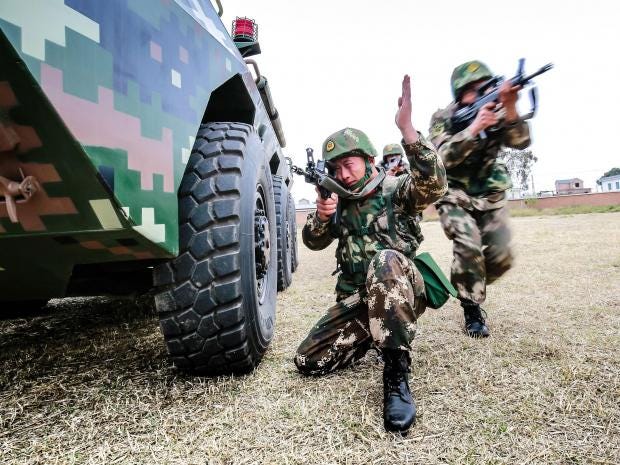Kim Sengupta
 China and Russia are challenging the military supremacy of America and its allies and the West can no longer rely on the strategic advantage it has enjoyed until now, a leading think tank states in its annual report.
China and Russia are challenging the military supremacy of America and its allies and the West can no longer rely on the strategic advantage it has enjoyed until now, a leading think tank states in its annual report.
The Military Balance 2018 report, produced by the IISS (International Institute of Strategic Studies) warns that while war between the great powers is not inevitable, Washington, Moscow and Beijing are now systematically preparing for the possibility of conflict.
The report details the drive by the Chinese leadership in acquiring and expanding its formidable arsenal. In the air, this includes the Chengdu J-20 combat aircraft entering service in 2020, which means the US losing its monopoly on stealth aircraft. Meanwhile its PL-15 extended range air-to-air missile system will be equipped with electronically scanned radars – technology few other nations possess.
 There have been similar advances in naval capabilities. China’s programme over the last 15 years means it has built more corvettes, destroyers, frigates and submarines than Japan, India and South Korea combined. The total tonnage of its new warships and auxiliaries launched in the last four years alone, the report points out, is significantly greater than that of the entire French navy. The launch of its first Type–055 cruiser illustrates its blue water capabilities enable it to deploy further including off the coast of Europe. Its base in Djibouti, in the Horn of Africa, lays the ground for missions at vast distances.
There have been similar advances in naval capabilities. China’s programme over the last 15 years means it has built more corvettes, destroyers, frigates and submarines than Japan, India and South Korea combined. The total tonnage of its new warships and auxiliaries launched in the last four years alone, the report points out, is significantly greater than that of the entire French navy. The launch of its first Type–055 cruiser illustrates its blue water capabilities enable it to deploy further including off the coast of Europe. Its base in Djibouti, in the Horn of Africa, lays the ground for missions at vast distances.
The pace of militarisation is slower in the case of Russia partly due to funding and industrial issues. It is, however, benefiting from experience of real life combat in Syria and Ukraine and has shown extensive capabilities in the field of hybrid warfare including cyber attacks.
Dr John Chipman, IISS director-general and chief executive said: “Some governments in the West will look to ‘leap-ahead’ technologies to augment and even deliver military power, but these are no guarantee of success.
“China’s emerging weapons developments and broader defence-technological progress further its transition from ‘catching up’ with the West to becoming a global defence innovator. The West no longer has a monopoly on world-leading defence innovation and production, or the funds to enable these. Indeed, China might be the one to leap ahead. But to use its capabilities to best effect, China will need to make similar improvements in training, doctrine and tactics.”
No comments:
Post a Comment